On the Up in Flores
It is a bright, sunny day and a beautiful ride.
I’m starting to feel that the jinx that has befouled our overland mission from Bali to Papua is beginning to lift.
It’s only taken a day and a half for the mechanic to find the part, mend our broken bike and deliver it proudly to our hotel. And, sure, I’m a little light-headed and cold-ridden.
But, my god, the landscapes…
We wind our way up out of Ruteng, past fields of maize and low bamboo huts, newborn piglets scampering by the roadway, through the clouds and down into a velvety heat. Stepped rice terraces in hues of gold and green descend towards banana orchards and coconut groves, grazing cattle, bleating goats and savage sun, rocky rivers in surrealist blues.
And we ascend again. The mountains send velvety tendons cascading into valleys that open up into dazzling vistas of sea, their peaks covered in clouds that chase each other down the gorges.
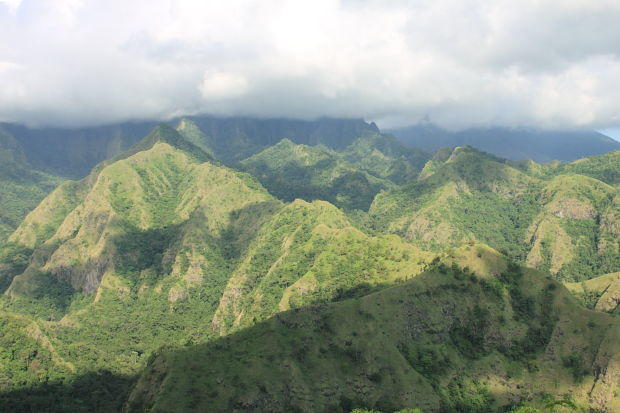
It feels, in fact, as we reach the edge of the bowl that holds the town of Bajawa, framed by neat volcanoes, as if we’re crossing the Wallace Line.
All of a sudden, the flora have an Australian feel to them.
There are spindly brooms with tendrilly scarlet blossoms, feathery pines, peeling stands of eucalyptus.
And as we watch a misty sunset over the little town below us, huddled into our jackets against the surprising cool that strikes at night, 1200m up, things feel – well, pretty good again, in fact.
The village of Lupa descends in steps, steep-thatched houses facing each other across a brushed dirt courtyard where the ancestors, still, are buried.
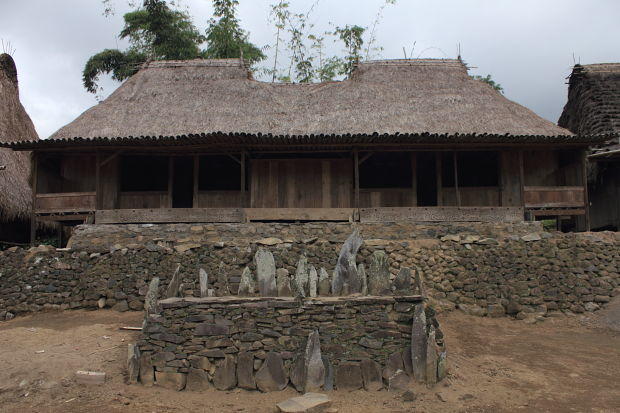
Someone is drying coffee beans on a Christian grave which sits below the ancient altar framed by jagged megaliths.
“The Ngada people are matrilineal,” explains Maximilian, our guide.
“What’s matrilineal?” asks Z.
“It means the clan goes down through the female line. A son belongs first to his mother’s clan and then his wife’s.”
“Matriarchal, too?” I ask.
“Not matriarchal,” he says. “The village elders are the men. And it’s the men who choose the wife, not the wife who chooses the man. But clan, house and property goes through the female line. A man comes to join his mother’s family, and is buried in her clan.”
Each of these little houses, with three spaces — one for sleeping, one for guests and one for work — belongs to one clan.
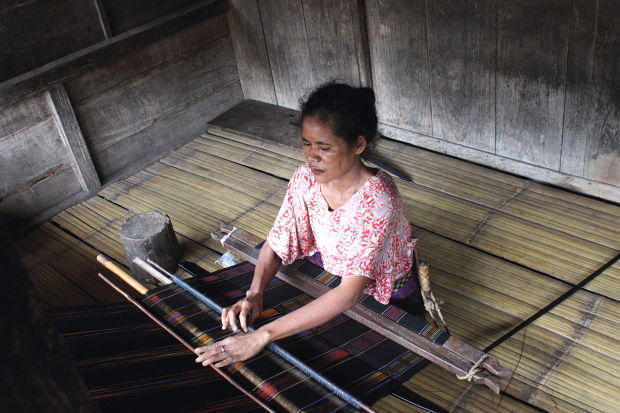
“Are there many matrilineal societies in Indonesia?” I ask.
“From what I have read of anthropology, there are only two,” says Maximilian. “One here. One in Sumatra.”
It never ceases to amaze me how many disparate cultures can exist within such a small space. The teepee-style houses of the Manggarai, back in Ruteng, are utterly different from these. Their lands descend from oldest son to oldest son.
Two rows of totems, the male totems like thatch parasols and the female like miniature thatch houses, sit in the courtyard below the altar. They house the spirits of the ancestors of the different village clans, the founding fathers and mothers of the place, if you like.
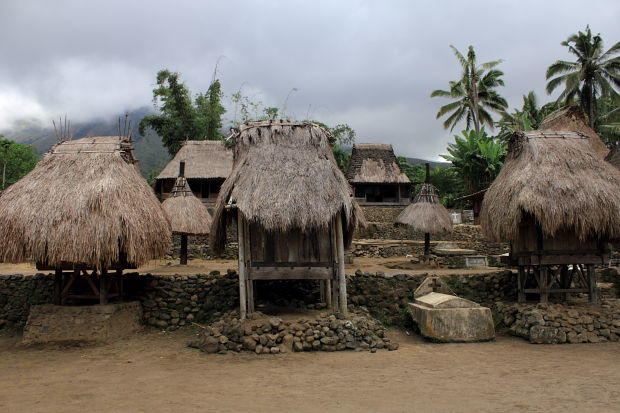
“Traditionally, the Ngada people worship two gods,” says Maximilian. “Though we are Catholic now… We have the male god, who is the sky god, and the female god, who represents the earth.”
For all the veneer of Catholicism, though, folk still sacrifice at the old altar, and the wealthier clans adorn their doors with the horns and jaws of buffalo they have offered.
And when bad luck strikes, the old ways are often best, even to educated Ngada who live in towns.
Maximilian’s aunt, for example, had some sort of breakdown a year or two ago.
“We tried doctors, psychiatrists, everything, but they could not work out what is wrong,” he says. “In the end, we took her to someone who could read the liver of a pig.”
“He told us that a woman who had been in the house had sold an old necklace that was sacred to the clan,” Maximilian adds. “We did not know that. So we replaced the necklace. We held a ceremony and sacrifices. Now my aunt denies she was ever ill. If you ask her, she’ll say it never happened.”
The Soa people live in the lower lands around Bajawa. Their harvest is just finished and celebrations are in full swing.
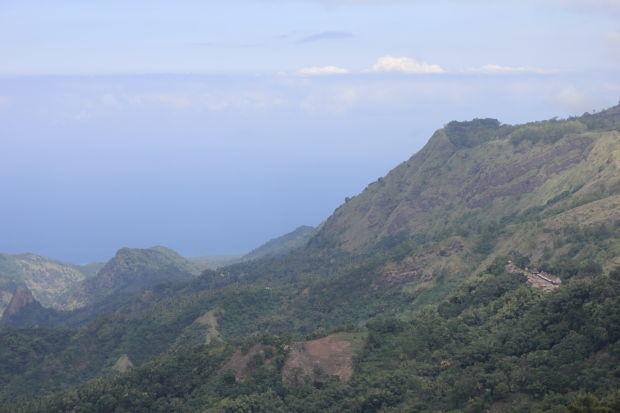
We can hear the boxing before we see it.
“In the old days men could not meet women except at the harvest celebrations,” says Maximilian. “So this would be their chance. And if two men liked the same woman, they settled it by boxing. Now it’s more of a competition between villages.”
A roar goes up, gasps, and then a steady buzz of chatter, punctuated by drums. An intermission?
It’s a carnival atmosphere, here in this tiny place. Probably a thousand people are gathered round the grassy patch, marked with ashes from the preliminary sacrifices, where guys in their teens and twenties are testing their strength.
Some of the clan elders sit under a gazebo, surreally sponsored by Honda. At either end, an all-male cheer-leading group drums and yells from a bamboo platform.
I make my way up towards one end to find my path firmly blocked.
“No!” says Maximilian. “It’s bad luck for a woman to pass near the supporters’ stand. Women are not allowed near there.”
One of the uniformed cops keeping order ushers us to the front, where we sit cross-legged on the grass. Elders pluck a young guy from the crowd to fight. I watch him progress down the field to where the elders will dress him for his bout. A skinny guy, he’s visibly nervous.
“They fight with antlers, wrapped in string,” says Maximilian. “You take a deer antler, you wrap it round and round with string until it’s as hard as stone. You tie it to the right hand and fight with the left.”
“Don’t people get hurt?” I ask.
“Yes,” says Maximilian. “But they believe the herbal medicines will help.”
We watch the first few bouts. They’re fast. Not least because each kid has two older men from his clan behind him, acting as a curious mix of judges and seconds.

The average round takes under 15 seconds of flailing, blocking and scuffling in the dust before the judges-cum-seconds jump in, grab the boys and pull them apart.
“What’s happening?” I ask Maximilian.
“They’ve broken the rules,” he says. “Left hand is only to block, not fight.”
It’s hardly the Marquess of Queensberry, from what I can see.
Our guy, who’s fought, like all the rest, protected only by a strip of cloth wound round his chest to shield the heart and a tight head turban, does not last long. He wobbles as he returns to the cheer-leading platform.
“I don’t know if you can see,” says Maximilian. “But the Soa people look different from my people. We have straight hair. They have curly hair. They are darker than us, too.”
He’s right. Bizarrely, as we saw with the Togutil in Halmahera, minority groups that live only a few days’ walk from each other are visibly distinct.
Sometimes I feel like we’ve spent too long in Indonesia. And then the country surprises us again.

Omigod, I love this post!
Thanks, Bowo. It was a real upswing…
Amazing how quickly fortunes can change, especially when all seems lost.
I hope you are filming some of this. X
This is awesome, and so amazing to see something like this after some real shite days leading up to it. The beauty of travel…
glad your bike is fixed! such incredible views. WOW!
more photos/videos?
im planning a motorcycle trip: Bali-Lombok-Sumbawa-Flores.
would love to learn about places worth seeing and those not worth seeing.
thanks!
Hi Gene,
Sorry, this is quite a historic post. Travelfish just published a guide to Sumbawa, which I’d recommend you pick up if you’re headed that way – he did a lot of research into what’s there, which is great as it has limited coverage in the major guidebooks….
Theodora